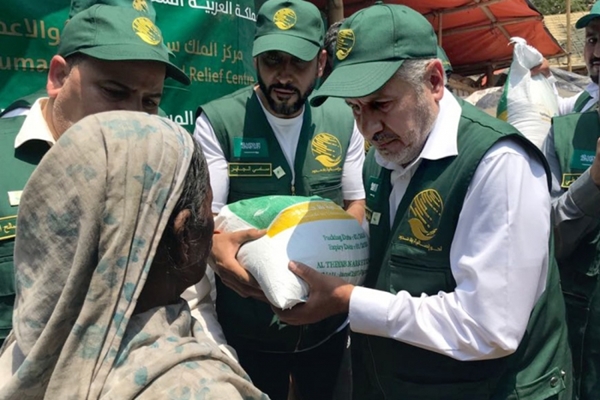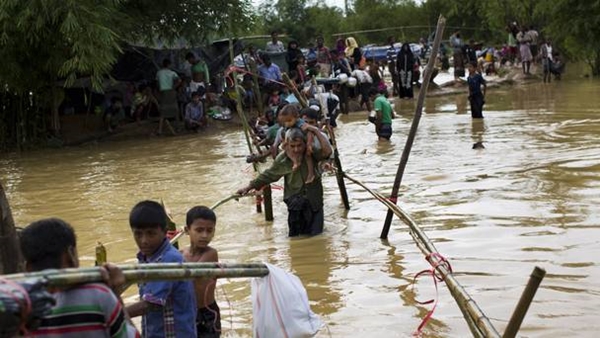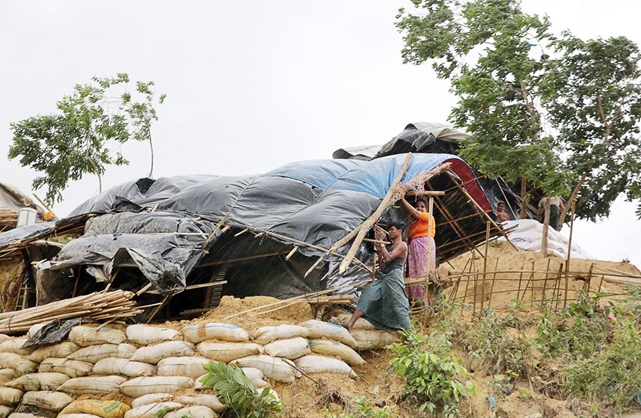SAM
Published:2018-05-08 20:45:21 BdST
Health partners set to protect Rohingyas during monsoon
FT ONLINE
The World Health Organization (WHO) and the government of Bangladesh are introducing a raft of measures to safeguard the wellbeing of hundreds of thousands of Rohingya refugees and locals in Cox’s Bazar during the approaching monsoon season.
The expected heavy rainfalls are likely to increase the risks of health hazards such as excess of sewage and other forms of waste in waterlogged environments, which may in turn lead to disease epidemics.
The preventative measures include and early warning system for disease outbreaks, the stockpiling of medicines inside refugee camps in case of access problems, and the relocation of health facilities deemed most at risk from landslides and flooding.
“In anticipation of the rainy season, WHO and partners want to ensure that we are able to adequately respond to any disease outbreak without delay,” Dr Khalid El Tahir, the WHO’s incident manager for Cox’s Bazar, said.
“Part of our work in Cox’s Bazar is supporting the primary and secondary health services to prevent disease outbreaks at large, and coordinating with more than 100 parties with health expertise here on the ground.”
The Ministry of Health and Family Welfare in tandem with the World Health Organization (WHO) has established a strategic “Early Warning, Alert and Response System (EWARS)”.

“The system can rapidly detect and timely respond to disease outbreaks to minimize deaths,” Dr Khalid El Tahir said.
“So far, 84% of the population is covered by the EWARS. Its findings facilitated the government’s and partners’ decision to conduct vaccination campaigns for measles and diphtheria.”
The system has been generating around 100 “early warning” alerts per week, from which the WHO can ascertain whether there will be a disease outbreak.
In the first week of April, for example, 90 alerts were triggered through indicator-based surveillance (IBS) and 12 through event-based surveillance (EBS). All alerts were verified by EWARS and 75 of them were discarded.
As part of its preparedness program for the upcoming monsoon, WHO is also supporting the implementation of the health sector’s contingency plan and has conducted a number of preparedness trainings.
“Health facilities that are at risk from landslides and flooding have been identified and we are trying to relocate those facilities,” Dr Tahir said.

Camp 8W, one of the Rohingya camps in Cox’s Bazar, is in the location most vulnerable to flooding and landslides, according to the Inter Sector Coordination Group (ICSG).
“There is also the risk of not getting access inside the camps at that time [during monsoon] so we are prepositioning medicine in certain areas of the camps that could be accessible. Therefore, in case of road blockades, there will be medical supplies there,” Dr Tahir said.
WHO has identified diseases that may become outbreaks, such as acute watery diarrhea, and has worked with the ministry of health on a guidance plan for other stakeholders.
Dr Tahir added: “We are helping partners to build medical centres for treating diarrhea. Some 207 health facilities in the camps have been assessed for vulnerability during rain, following which nearly 25% of them are being relocated.”
Additionally, WHO and the Institute of Epidemiology, Disease Control and Research (IEDCR) have established a public health laboratory at Cox’s Bazar Medical College to facilitate quick diagnosis and treatment of disease in case of an outbreak among the refugees and host communities in Bangladesh.
Dr Tahir said the laboratory will diagnose pathogens causing diphtheria and will screen for toxin genes, dengue, chikungunya, hepatitis viruses (A, B, C and E), Japanese encephalitis, pertussis, rotavirus, and scrub typhus (by ELISA test).
“The field laboratory will be able to test and communicate the results back to the health facility within 48 hours, affording a drastic reduction in the turnaround time while also bypassing the transportation bias,” Dr Tahir said.
This marks an improvement on previous monsoon seasons, when specimens were transported in cold chain to the IEDCR’s central laboratory in Dhaka in a time consuming process.
The new laboratory will be managed by the Institute of Epidemiology, Disease Control and Research with material support from the World Health Organization.
Meanwhile, WHO has again appealed for USD 16.5 million from partners and the international community to facilitate its continued support to the Rohingya response in 2018.
This is part of the USD 113.1 million being requested by all health partners under the Joint Response Plan for the Rohingya crisis.
Unauthorized use or reproduction of The Finance Today content for commercial purposes is strictly prohibited.


